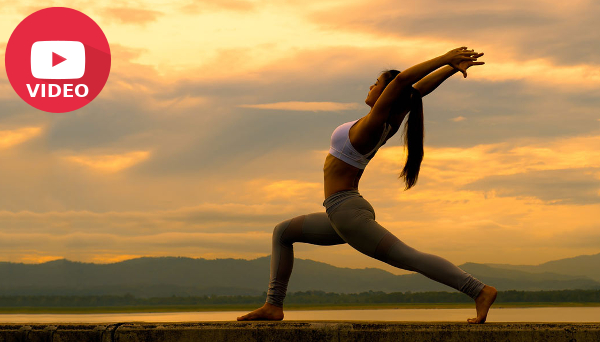Several Thousand years ago, on the banks of the lake Kantisarovar in the Himalayas, Adiyogi poured his profound knowledge into the legendary Saptarishis or “seven sages”. The sages carried this powerful yogic science to different parts of the world, including Asia, the Middle East, Northern Africa and South America. Interestingly, modern scholars have noted and marvelled at the close parallels found between ancient cultures across the globe. However, it was in India that the yogic system found its fullest expression. Agastya, the Saptarishi who travelled across the Indian subcontinent, crafted this culture around a core yogic way of life.
A number of seals and fossil remains of Indus Saraswati valley civilization with Yotic motives and figures performing yoga indicate the presence of Yoga in India. The Number of seals and fossil remains of Indus Saraswati valley civilization with Yogic motives and figures performing Yoga Sadhana suggest the presence of Yoga in ancient India. The phallic symbols, seals of idols of mother Goddess are suggestive of Tantra Yoga. Presence of Yoga is available in folk traditions, Indus valley civilization, Vedic and Upanishadic heritage, Buddhist and Jain traditions, Darshanas, epics of Mahabharat and Ramayana, theistic traditions of Shaivas, Vaishnavas, and Tantric traditions. In addition, there was a primordial or pure Yoga which has been manifested in mystical traditions of South Asia. This was the time when Yoga was being practised under the direct guidance of Guru and its spritual value was given special importance. It was a part of Upasana and yoga sadhana was inbuilt in their rituals. Sun was given highest importance during the vedic period. The practice of ‘Surya namaskara’ may have been invented later due to this influence. Pranayama was a part of daily ritual and to offer the oblation. Though Yoga was being practiced in the pre-Vedic period, the great Sage Maharshi Patanjali systematized and codified the then existing practices of Yoga, its meaning and its related knowledge through his Yoga Sutras. After Patanjali, many Sages and Yoga Masters contributed greatly for the preservation and development of the field through their well documented practices and literature.
Suryanamaskara
istorical evidences of the existence of Yoga were seen in the pre-Vedic period (2700 B.C.), and thereafter till Patanjali’s period. The main sources, from which we get the information about Yoga practices and the related literature during this period, are available in Vedas (4), Upanishads(108), Smritis, teachings of Buddhism, Jainism, Panini, Epics (2), Puranas (18) etc.
Tentatively, the period between 500 BC – 800 A.D. is considered as the Classical period which is also considered as the most fertile and prominent period in the history and development of Yoga. During this period, commentaries of Vyasa on Yoga Sutras and Bhagawadgita etc. came into existence.This period can be mainly dedicated to two great religious teachers of India –Mahavir and Buddha. The concept of Five great vows – Pancha mahavrata- by Mahavir and Ashta Magga or eightfold path by Buddha – can be well considered as early nature of Yoga sadhana. We find its more explicit explanation in Bhagawadgita which has elaborately presented the concept of Gyan yoga, Bhakti yoga and Karma Yoga. These three types of yoga are still the highest example of human wisdom and and even to day people find peace by following the methods as shown in Gita. Patanjali’s yoga sutra besides containing various aspects of yoga, is mainly identified with eight fold path of Yoga. The very important commentary on Yoga sutra by Vyasa was also written. During this very period the aspect of mind was given importance and it was clearly brought out through Yoga sadhana, Mind and body both can be brought under control to experience equanimity.The period between 800 A.D. – 1700 A.D. has been recognized as the Post Classical period wherein the teachings of great Acharyatrayas-Adi Shankracharya, Ramanujacharya, Madhavacharya-were prominent during this period. The teachings of Suradasa, Tulasidasa, Purandardasa, Mirabai were the great contributors during this period. The Natha Yogis of Hathayoga Tradition like Matsyendaranatha, Gorkshanatha, Cauranginatha, Swatmaram Suri, Gheranda, Shrinivasa Bhatt are some of the great personalities who popularized the Hatha Yoga practices during this period.
The period between 1700 – 1900 A.D. is considered as Modern period in which the great Yogacharyas- Ramana Maharshi, Ramakrishna Paramhansa, Paramhansa Yogananda, Vivekananda etc. have contributed for the development of Raja Yoga.This was the period when Vedanta, Bhakti yoga, Nathayoga or Hatha-yoga flourished. The Shadanga-yoga of Gorakshashatakam, Chaturanga-yoga of Hathayogapradipika, Saptanga-yoga of Gheranda Samhita, were the main tenents of Hatha-yoga.
Source: MEA
Image Courtesy:Rapid Leaks
You may also like
-
India Against Mpox
-
Combination of ‘Siddha’ Drugs Reduces Anemia in Adolescent Girls: Study
-
Suspected Mpox Case Under Investigation; Patient Put Under Isolation, No Cause for Alarm
-
Prime Minister Applauds India’s Best Ever Performance at the Paralympic Games
-
National Exit Test (NExT) for Ayush to be Effective from 2021-2022 Batch: Union Minister of Ayush Shri Prataprao Jadhav
